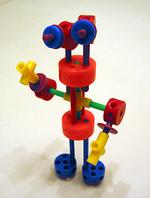SXSW: Tinker Toys For Technologists
This week, SXSW Interactive featured a keynote conversation with Limor Fried (Adafruit Industries) and Phil Torrone (MAKE Magazine). Hacking the DIY culture, Torrone and Fried discussed the techniques of tinkering with technology. With examples such as the Bacon Alarm Clock, skin-embedded RFID chips, and the recent Gummy Bear Chandelier, the panelists whetted the audience's palate with a selection of delicious DIY snacks.
Hacktivism culture has been spreading at a rapid rate as of late. Simply said, "People make weird and bizarre things," Torrone stated in response to the movement. Sharing "recipes" has now become commonplace among tinkering communities and unlike dating, you're not slapped if you show all your intimate parts too soon.
Fried shared her thoughts on the subject, calling for an open hardware movement instead of simply source code. Using available tools and techniques like Google SketchUp and Creative Commons, proper documentation to hardware hacking can be applied.
Fried believes that by even leaving one component open in a piece of technology, it opens the flood gates for positive user interaction with the product. An example given was the Roomba, the vacuum to robotics platform with an open API. Passionate product interaction grew out of potential opportunities and created unexpected (to the brand, at least) outcomes: Roombas now took pictures, ported wifi, and integrated product-related modification. Another example was the Qtopia Greenphone, an open phone unlike any other that allows users to write their own applications for it. The importance for open devices is growing, as the panelists cited a survey of MIT students about their most hated technology that they used everyday. The majority answer? Cell phones.
Tinkering culture has created an ongoing debate, however, that perhaps was one thing they didn't intend to DIY. In the friction that takes place between brands/products and users, what is a more enriching experience? Should users always have to revert to hacking or should products openly allow tinkering? Fried and Torrone agreed that the more a product gives away information, the more people buy, and the more the product becomes accessible to a wider audience. "When there's enough of a movement, companies become more receptive," stated Torrone.
More of our SXSW photo album can be seen here.


